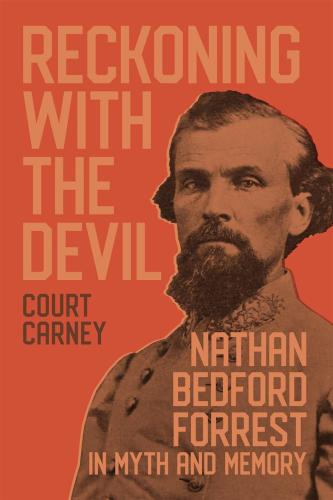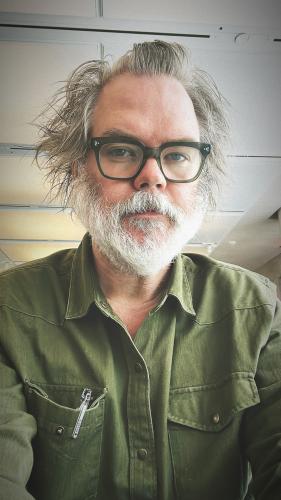NACOGDOCHES, Texas –– Dr. Court Carney, professor in Stephen F. Austin State University’s Department of History, authored and is set to publish the book, “Reckoning with the Devil: Nathan Bedford Forrest in Myth and Memory,” which recounts Forrest’s troubled, complex legacy as a slave trader, Confederate general and prominent leader of the Ku Klux Klan. The book will be published Sept. 17 by LSU Press.
According to Carney, the book examines the public memory of Forrest, whose life was defined by racialized violence. The book discusses the construction and expansion of his public memory, the historical writing centered on him, and how he entered popular culture throughout the 20th century.
One connecting thread of the book is the building, and ultimate removal, of statues of Forrest. Carney explained that these sites of memory allow for a detailed examination of how Forrest reflects and refracts a white supremacist perspective of the past and present. Unique in its focus, this book offers an original take on a tension-filled and timely topic: how society continues to remember the Civil War and how race informs and explains this process.
The inspiration for the book was solidified with the removal of a prominent Forrest statue in 2017, which offered Carney a clear narrative arc. However, his exploration of Forrest's history started well before that, with an early chapter in 2021 and completion of the first full draft in spring 2023.
“I have long been interested in a statue of Nathan Bedford Forrest erected by the city of Memphis, Tennessee, in 1905,” Carney said. “Memphis has a wildly interesting urban history filled with racial violence, trauma and upheavals, and this statue served as a useful lens in which to get at these deeper issues.
“For me, the story of Forrest was a story of 20th-century Memphis, and the story of modern Memphis was the story of understanding why Forrest loomed so large. That story had interested me for a long time, and from there, I began to look at the cultural reverberations of memory and memorialization and how race and racism defined the tensions embedded in the history of the city.”
Carney, who has taught at SFA since August 2008, is a cultural historian with a particular interest in race, identity and memory, and how these issues give rise to cultural forms, such as music and monuments.
His first book, “Cuttin’ Up: How Early Jazz Got America’s Ear” looked at how jazz emerged as a national cultural art form. “Reckoning with the Devil: Nathan Bedford Forrest in Myth and Memory” is similar in that it examines how Americans have tried to make sense of their current moment through an understanding, and often rewriting, of their connection to the past and to each other.
“I hope that this book provides readers with a more nuanced understanding of the collision of ideas that led to the removal of various Civil War monuments,” Carney said. “The larger story, though, is important, too, as it helps explain the various ways Americans have attempted to define, and perpetually redefine, their connection to a past that is often filled with invention and myth.”
The book can be pre-ordered on the LSU Press website or on Amazon. For more information about SFA’s Department of History, visit sfasu.edu/history.

 Axe ’Em, Jacks!
Axe ’Em, Jacks!

